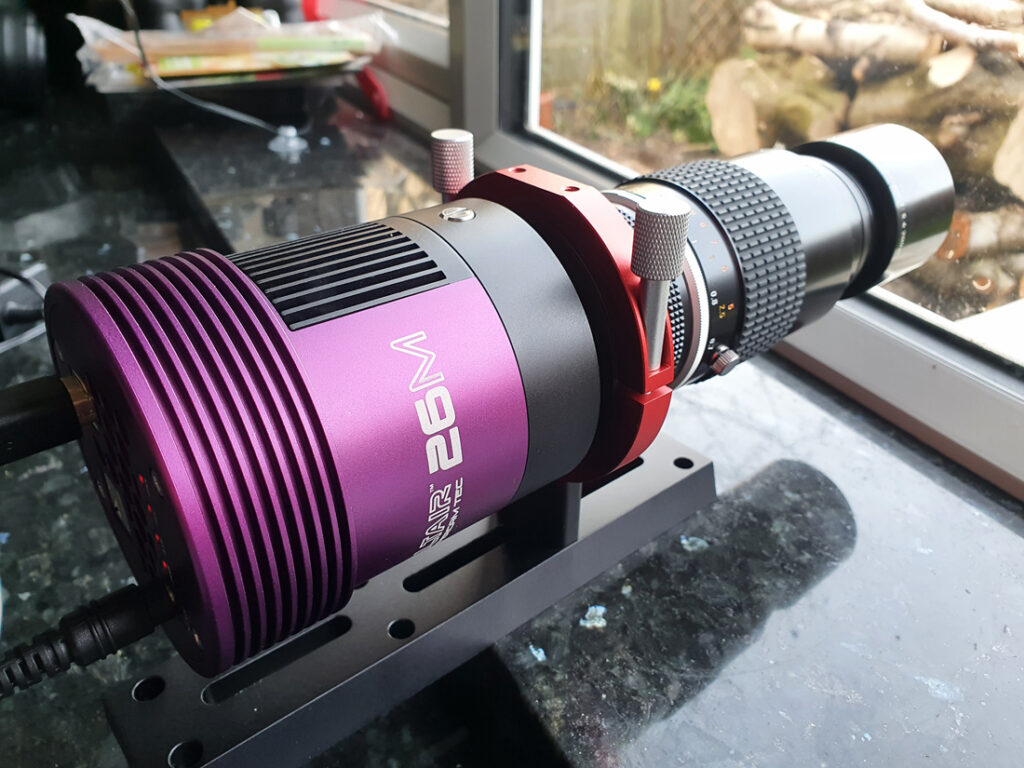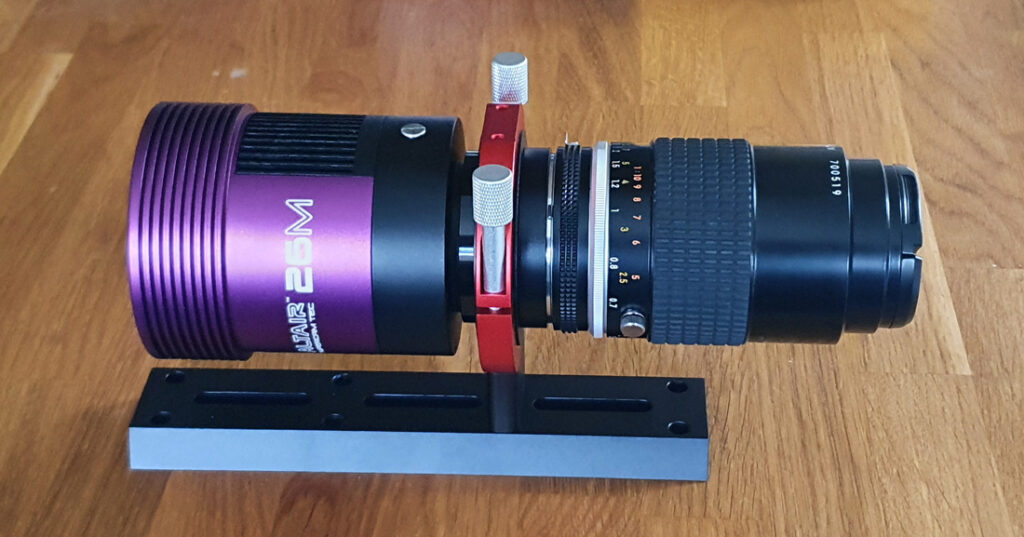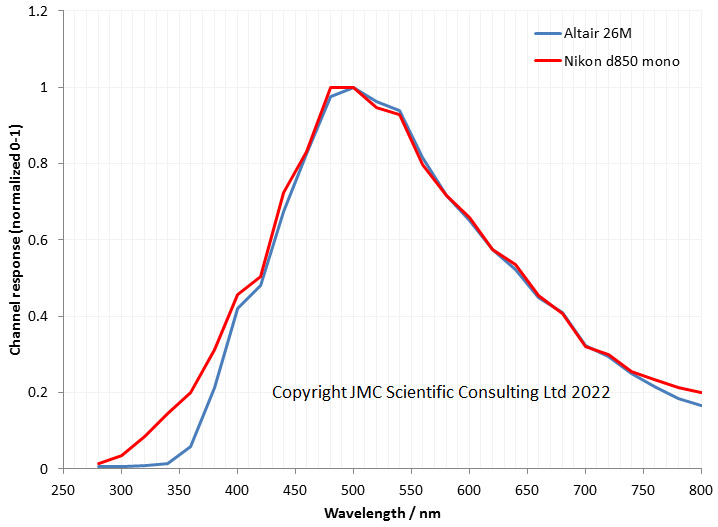‘Jon, you should always be open to new experiences’, is something I get all the time, and to be honest new experiences often make me nervous. New science though, now that is a different matter, especially when it leads to experiments and perhaps new toys to work with. For a while I’ve been wondering about getting a camera for my microscope which wasn’t a SLR or mirrorless one, but it needed to be something I could make work in UV down to 300nm (and ideally below). After consideration of various options, I approached Altair Astro in the UK about their 26M monochrome APS-C camera.
This camera has a BSI Sony IMX571 monochrome sensor, and has the option of cooling as well. Importantly for me, they are UK based, and they were willing to work with me on some adaptations. The window on the camera which is there because of the cooling setup would block the UV so I ordered one without the window and am having a fused silica replacement made instead by one of my regular optics suppliers – UQG Optics. Also was pretty certain that the sensor on the coverglass will be UV blocking (like most modern sensor coverglasses) and be no good down at 300nm, so the plan will be to send it away to my friendly camera modifier MaxMax and get the coverglass replaced with fused silica. I will however be keeping the microlenses on (bit of an experiment, hopefully they will still work in the UV – my experiments say they should, but not everyone is convinced).
I went with the APS-C one for a couple of reasons. Cost – the full frame sensor version was over twice the price. Risk – given it will have the coverglass removed this is a dangerous process and doesn’t always work first time. Damaging this one will be a lot cheaper to replace than the full frame one. I would have loved the 61Mp fullframe one they do (Sony IMX455 sensor), but it was overkill for my microscopy work, and I just couldn’t justify it at this stage. I’ll also be using it on the Questar UV telescope I’ll be getting later this year (from their UK dealer, The Widescreen Centre) and APS-C will be better for that as well.
The camera arrived the other day, along with a nice adapter for Nikon lenses and I managed to get it up and running (steep learning curve as I have never used a camera like this before). Some shots of the brief setup and test with the Rayfact 105mm lens (the picture of the garden was taken with the Baader U UV filter on the lens, through the glass of the kitchen window).



The next stage was to understand more about its spectral response in its unmodified form. For this I used the approach I developed for looking at cameras response in the UV (see here for background). As a reference camera I used my monochrome converted Nikon d850 which also has a BSI sensor. Normalizing and plotting the curves from the two cameras gave the following.

The two cameras have very similar response curves between 400 and 700nm as would be expected. However below 400nm the 26M response drops rapidly, being essentially non-responsive below 340nm. This can be seen more easily if I plot the response of the 26M vs the monochrome d850 and express it as a percentage.

Below 340nm I have not bothered plotting anything as it means dealing with two very small numbers and it all gets a bit noisy.
What’s different between the two cameras (apart from the sensor size)? The monochrome d850 has a fused silica coverglass, and has had the Bayer filter and microlenses removed. The 26M has the stock coverglass, and (I am assuming) has microlenses and something between the microlenses and the sensor. I suspect the drop in sensitivity below 400nm for the 26M is being driven by the coverglass, as I’ve seen a few coverglasses now which are starting to block UV around 400nm before becoming opaque by about 320nm. Not sure as to why the slight drop about 700nm – perhaps AR coatings on the stock coverglass which are optimised to visible?
Now I’ve measured this response curve, the next stage will be for me to send the camera to Dan at MaxMax and have the coverglass removed and replaced with fused silica.
Overall the build quality of the 26M seems impressive, so I am looking forward to having a bit more of a play with this and seeing what it can do once it is fully modified.
Thanks for reading, and if you’d like to know more about this or any other aspects of my work, you can reach me here.
